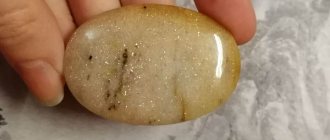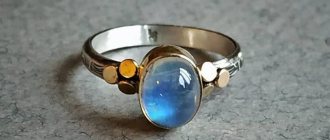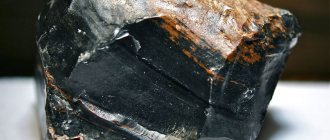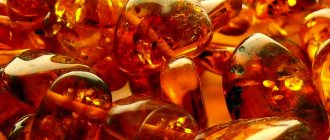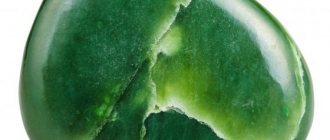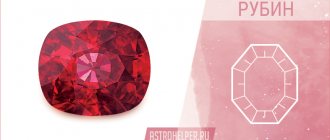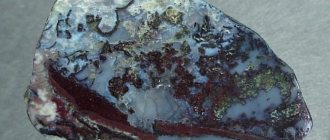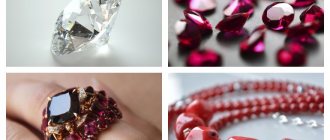Gold in nature: where it is found
Gold is found on our planet:
- in plants - some species are able to accumulate metal obtained along with nutrients from the soil;
- in the water of seas, oceans and other bodies of water - extracting a mineral from the hydrosphere is a costly and not always profitable technology;
- in stones - most of the metal mined industrially is obtained from rocks.
Gold in its pure form is very rare in nature. Due to constant exposure to the elements, sometimes gold inclusions are leached from the rock and formed into nugget ingots, as the natural alloy of this metal is called.
But more often, in order to separate pure gold from a stone, it is necessary to carefully process the mined rock.
Helpful information! Gold-bearing rocks in most cases occur among quartz formations and sulfide ores. Prospectors, having found such an accumulation of minerals, confidently judge the feasibility of developing the layers.
Home techniques
Industrial gold mining differs significantly from private gold mining, and the methods used have many advantages. If you know how to identify gold in a stone, you can successfully remove it from there using the most primitive methods.
And you don’t have to go to distant Siberia in search of abandoned mines. You can implement the idea of withdrawing precious metals at home. Back in the days of the Soviet Union, skilled craftsmen extracted it from old watches and other yellow metal products. In the recent past, gold plating was present on many radio components and household appliances, which was justified by its practicality and resistance to corrosion. Without a doubt, the percentage of gold content in such objects is negligible, but in the rock it is not that high.
If you want to get the precious yellow material at home, just take an old wristwatch and then fill it with nitric acid in glass or plastic containers. The substance will quickly dissolve any materials except gold. The resulting solution must be carefully passed through several layers of gauze, and the seized gold must be infused in vodka for 24 hours. This will result in a brownish tint.
In the future, it is necessary to rinse the composition with plain water, filter again and put on low heat to melt. To improve the efficiency of the latter process, soda is added to the gold. We must not forget about the ability of the yellow metal to evaporate, but through melting it is cleared of excess impurities and becomes like a tiny ingot.
Gold can also be extracted from radio components , in which it was used back in the Soviet Union due to its inertness and minimal electrical conductivity. To implement such an idea, you need to use “regia vodka”, which consists of nitric and hydrochloric acid. Such a substance can dissolve gold at room temperature. By the way, there are historical facts about the dissolution of gold medals in order to hide them from the fascist military. Under the influence of aqua regia, gold precipitates, after which it is thoroughly filtered and washed.
Searching for gold in Russia
Since ancient times, following the thirst for profit and believing in myths about rich deposits, the rulers of Rus' organized searches for gold. But, despite the vastness of the Russian State, efforts were in vain:
- Prince John III the Great invited foreign specialists to achieve this goal, investing substantial funds in resolving the issue. But all efforts were crowned with only a few peas of the coveted metal, which were not enough even for a pectoral cross;
- Tsar Ivan the Terrible, in pursuit of treasures, went to conquer the lands of distant Siberia, but also failed in his search.
In 1945, a resident of a Ural village found a large yellow ingot during excavation work. He showed the find to a master he knew, who identified it as pure gold. The Soviet authorities sent gemologists to the site where the nugget was discovered, who studied the area in detail and confirmed the presence of huge deposits of the precious metal, and soon a mine opened there. This development marked the beginning of centralized gold mining in the RSFSR.
Today, Russia ranks third, after Australia and China, in gold production. The largest locations are in the Far East and Siberia:
- Magadan region - 180 gold mining enterprises extract more than thirty tons of raw materials from the subsoil per year;
- Chukotka - more than twenty-five tons of annual production;
- Yakutia is the richest region. There are over eight hundred gold mines here, yielding more than twenty-four tons of raw materials per year;
- The Irkutsk region ranks fourth, with production volumes of more than twenty-three tons per year.
In addition to the listed regions, gold is mined in the Amur, Chelyabinsk, Sverdlovsk regions, the republics of Bashkiria and Buryatia, the Khabarovsk and Trans-Baikal territories.
Historical facts
If you familiarize yourself with historical facts, you will know that during the times of Ancient Rus', the state had practically no gold deposits, despite its vast area. Prince Ivan III devoted a significant part of his life to the issue of searching for precious metals, because he was practically obsessed with the idea of \u200b\u200bsearching for treasures. To realize his dream, he even invited Italian specialists and allocated impressive sums. But the efforts were not justified; he managed to find only a small piece of gold, which was only enough to make a tiny cross.
After him, Ivan the Terrible began to actively search for yellow sand. To find the valuable metal, he even went to war against the Siberian settlements, but was also doomed to failure. A similar story happened with the rest of the rulers of Ancient Rus', until a turning point in the history of the state occurred. This was the rise to power of Peter I. The legendary ruler began to actively introduce clothing items and jewelry containing precious metals and valuable stones.
The first gold nugget was mined by a Ural peasant in 1945. This happened spontaneously while digging a hole. The happy owner of the precious stone immediately showed the find to a friend, who turned out to be a silversmith and confirmed the authenticity of the nugget.
The place where the find was discovered immediately attracted the attention of specialists, which led to the start of numerous search operations. However, they were unable to find anything, so work was suspended. Soon the authorities decided to resume the search and equip the mine. This decision paid off. At the bottom of the dug mine there was an impressive amount of gold reserves, which became the basis for large-scale gold mining.
Since ancient times, people have been interested in the idea of mining gold at home. Today, this trend is no less popular, only the methods of its implementation have changed significantly. Of course, you won’t be able to get rich through private gold mining, but finding a new hobby, as well as a little extra income, is quite possible.
Extracting gold from stones
Developments in new technologies make it easy to extract gold from stone. But it is impossible to determine which mineral contains gold without special research. Many rocks, at first glance, look identical to containing this precious metal, with a similar structure and color range - from red to orange. Therefore, even experienced jewelers are forced to use high technology to distinguish gold from minerals:
- pyrite;
- chalcopyrite;
- pentlandite;
- pyrophyllite;
- mica.
To recognize the presence of a gold-bearing stone in a rock, the mineral must be crushed with a hammer, assessing the result by the presence of the following signs:
- the inclusions of gold will be flattened;
- semi-precious stones and minerals will be crushed into crumbs;
- the mica will crumble into sand.
Note! Some stones that look like gold-containing ones and form flattened inclusions under mechanical stress may turn out to be without precious metal content.
What rocks contain gold?
In most cases, aurum is found in intrusive massifs. These rocks were formed during the release of magmatic mass to the surface of the Earth. In addition to the precious metal, they contain copper, nickel, titanium, chromium, platinum group metals and other elements.
Quartz crystal is the main supplier of the precious metal. In addition, gold ore is found in quartz diorites and iron ore caps. The close occurrence of the noble metal is indicated by such rocks as pyrite, chalcopyrite, sphalerite, galerite, stibnite and some others.
You can also find small nuggets in the sand of mountain lakes. In this case, the gold particles resemble granules or look like small pieces of wire.
Based on its external characteristics, gold ore in placers is very easy to confuse with pyrite. There are two ways to determine whether a found placer belongs to a precious metal:
- Physical. The easiest way is to scratch the surface of the nugget with a thin needle. Pyrite or mica, unlike gold, quickly crumbles under mechanical stress, which can be seen through a magnifying glass.
- Chemical. If mining occurs in the field, it is not possible to conduct a thorough analysis; it is enough to place the found granule in a beaker with sulfuric acid. If you have a noble metal in front of you, no reaction will follow.
The precious element is found in granite no less often than in quartz, but according to the principle of extraction, this is the most complex and labor-intensive process. Special equipment and technologies are required.
Modern mining technologies
The mined ore from the quarry is delivered by dump trucks to the processing plant, where the raw materials undergo primary processing:
- sorting, depending on the percentage of metal;
- mixing batches to form a homogeneous composition according to the degree of gold presence;
- screening out large inclusions, which are separately subjected to additional grinding;
- grinding of raw materials into a dusty mass and subsequent enrichment with the addition of water, preparation of material ready for processing by flotation - saturation with air;
- introduction of chemical reagents that promote the separation of gold;
- foam is selected from the resulting composition (directly – gold suspension), thickened using special reagents;
- the next stage is squeezing out excess water in press filters;
- The dehydrated material is dried in ovens at high temperatures and crushed.
One ton of the concentrate obtained after processing contains up to fifty grams of gold.
The products of the processing plant are finally converted into precious metal after smelting at a hydrometallurgical plant.
Properties and types of mineral
Aventurine had a variety of names among different peoples. For the abundance of golden sparkles it was called gold spark in Rus'. In Altai, the stone received the name Belorechit. There were other names - stone of love, golden sand, sparkle. In China it is called the Emperor's Stone. The mineral received its name (aventurine) for its external resemblance to aventurine glass. The ornamental material gold sand was made by accident by Italian glassblowers.
This quartzite is mined in mines or on the surface of the soil where the vein lies. To understand the properties of aventurine stone and who it is suitable for, it is necessary to take into account the variety of its types and colors.
The stone has a density on the Moss scale of 6-7 and can be easily processed with a diamond or file. Thanks to these properties, the mineral can be given various forms.
After cutting, quartzite is carefully polished to fully reveal its beauty.
The mineral contains a variety of impurities, which provides it with a wide range of colors. Its varieties may have different degrees of homogeneity and the nature of inclusions.
Breeds with the following colors have been discovered:
- Green - has a uniform color, the tone can vary from light green to rich green. This variety can be confused with jadeite or jade; its distinctive feature is the golden sparkles that appear in the sun. Of all the varieties, this is the most durable.
- The pink variety has a mild sparkle.
- The honey-yellow variety has a pearlescent luster. Possible defects in the form of porosity of the structure.
- The golden cherry variety is distinguished by the greatest brightness and sparkle.
- White-cherry is distinguished by heterogeneity of color in the form of stripes and spots.
- Brown aventurine is distinguished by its high density and uneven color.
- The white, vaguely banded variety shimmers faintly, but has an original pattern.
- The rarest varieties are blue and black. In such specimens, bright golden inclusions are especially noticeable.
How to extract gold from stone at home
At home, gold is extracted from stone in the following ways:
- dry, using chlorine - the name of the method is explained by the peculiarities of the technology. The stone is crushed into powder as much as possible, then chlorine gas is introduced into the composition, which binds all other minerals except gold through a chemical reaction. The technique is dangerous, requiring skill and experience from the performer;
- chemical, which involves dissolving excess mineral components with aggressive acids;
- electrolysis - hydrochloric acid and gold chloride are added to a transparent container with ground stone. An electric current is connected to the mixture, as a result of the process gold settles into a sediment.
But amateur miners who want to resort to extracting gold from stone at home must take into account that in our country, illegal mining and sale of precious metals is prosecuted by law.
Extraction methods
One of the oldest, but also the most dangerous methods for extracting gold from stones is amalgamation. Today, the technique is officially prohibited in the Russian Federation, but continues to be in demand in other countries, as well as among “black” miners. To extract the precious metal, mercury is used, which is placed in a plastic or glass tray with existing sand and the smallest fractions of the yellow treasure.
It is known that mercury is not able to dissolve gold, but can draw it into its balls. To speed up the process, the gold miner regularly turns the tray, allowing the substance to roll completely over its entire surface.
Mercury beads combined with gold are called amalgam . After separating such a mixture from the sand, it is additionally treated with hydrochloric acid, which promotes the dissolution of mercury, but has no effect on gold. The method of evaporating toxic mercury under the influence of fire is also practiced. Similar manipulations were carried out directly in the frying pan. Once in the acid, the gold settles to the bottom in the form of flakes, after which it is subjected to deep washing. If you want to preserve mercury for further operations, a piece of foil is lowered into the acid. Thus, the mercury precipitates.
The next method of gold extraction, known since ancient times, is panning. Unlike the previous method, washing is considered completely safe for the body and does not harm the environment. The method is based on the special properties of the precious metal, namely its high density. Flushing is relevant for both industrial and private mining. It also continues to be practiced in placer deposits.
The technological process itself consists of washing the sand with water, as a result of which the light fractions are quickly removed, while the heavy fractions remain at the bottom. The disadvantage of this technique is that too small particles are washed out by water, which significantly reduces production productivity. When wondering whether it is possible to engage in private gold mining in this way, you need to pay attention to the relevant law. It involves the purchase of a prospector's license valid for up to five years.
Searching with a metal detector
Some people who want to get rich try to look for gold deposits using a detector. But such an activity is not productive and is associated with a pointless waste of time, since this tool, in addition to gold, reacts equally to many other alloys.
To succeed, you first need:
- study a topographic map of the area for possible content of this metal;
- get acquainted with the territory, determining by indirect signs the most promising area for development.
If the deposits are located at great depths, huge volumes of soil will have to be hauled up to construct the mine. When working with a metal detector, you should prepare for long and hard work, not always with a successful result.
Despite the difficulties of developing gold deposits, the number of miners is increasing from year to year. But the reality is that even the simplest methods of obtaining gold from stone are not effective without specialized equipment and modern technologies, which can only be used on an industrial scale.
Chemical and physical properties
The chemical composition of Aventurine is represented by quartz and chromophores - shimmering inclusions and impurities that give the stone its characteristic sparkle. Uniformity, texture and color depend on the conditions and location of the mineral.
Due to their increased hardness, crystals are easily polished, acquire the desired shape, and are not destroyed or scratched during wear. The optical effect of mirror shine attracts attention due to the reflection of light from plates of mica, hematite and other substances found in the stone.
Origin of the mineral
The lustrous mineral is a metamorphic rock. It is formed during the recrystallization of sandstones, which form quartzites.
Where is it mined and used?
Aventurine is a stone that is mined almost all over the world. The most ancient deposits are located in China, where the green mineral is more common. The people of China consider it sacred. It was taken on trips, for serious transactions, and worn under the heart as a talisman.
Also, production sites are located in Brazil, Austria, Spain, and Norway. The most common green gem is mined in India. Indian stone is used in jewelry. The stone has found application in lithotherapy.
In America it is called “Colorado gold stone.” The stone was also called “golden sand”. In Russia, its extraction began at the beginning of the 19th century. The deposit was found in the Chelyabinsk region. However, by the end of the century, production was stopped. It was recently resumed again.
How to distinguish from a fake
There is an artificial analogue that was created in Ancient Egypt. Small chips of copper, chrome or iron were added to brown glass, creating a semblance of a natural pattern. The manufacturing technology has been lost. However, in the 16th century. Venetian glassblowers began blowing “glass aventurine” again.
There are several differences between a fake and a creation of nature:
- The glass fake has a bright shine and a lot of sparkles. Natural aventurine has muted colors.
- Natural stones are prone to iridescence - this is a rainbow glow around it, which becomes noticeable in bright light. A fake will never have this effect, it just shines. Also, the gem has a golden cast if it contains mica and hematite.
- The imitation is created by interspersing copper filings into molten glass. Therefore, in the imitation of aventurine, the sparkles are crowded and unevenly located. Natural stone is distinguished by evenly dispersed and equally oriented flakes of other rocks. It cannot have zones without dot inclusions, but the glass still has them.
- Most often, blue and yellow stones are counterfeited, because... they are rarely found in nature. They are distinguished by a bright unnatural shade and pronounced sparkles. However, the natural sandy shade and texture are quite difficult to fake.
Are there any records?
There are not many record stones. During excavations in the 19th century. The largest mineral was found on the territory of Taganay. That is why it is sometimes called taganaite. Two vases were cut out of it. One exhibit is still in the Hermitage; the diameter of the vase is almost 2.5 m, height 1.5 m, and weight 4 tons.
